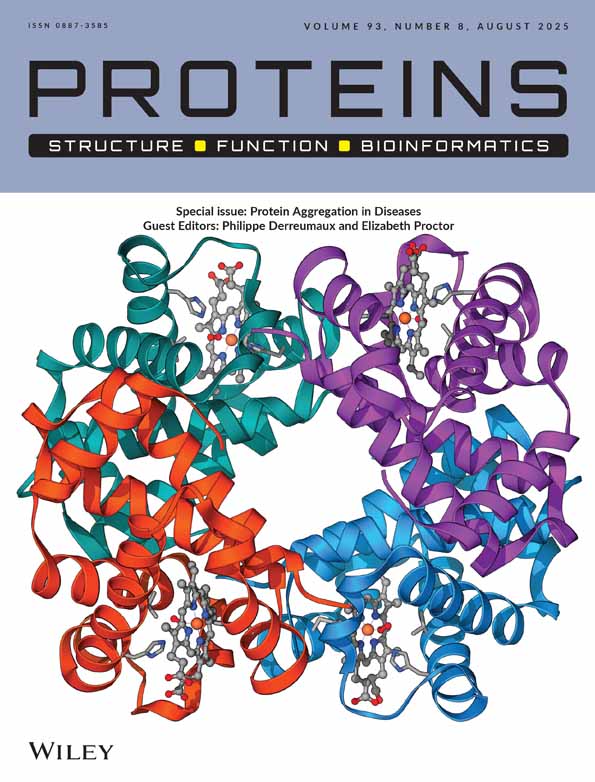Folding of β/α-unit scrambled forms of S. cerevisiae triosephosphate isomerase: Evidence for autonomy of substructure formation and plasticity of hydrophobic and hydrogen bonding interactions in core of (β/α)8-barrel
Abstract
The (β/α)8-barrel domain consists of eight topologically equivalent supersecondary structural motifs known as β/α-units. Each unit consists of a single β-strand, an α-helix, and two loops. Evidence collected in recent years indicates that the (β/α)8-barrel motif may not be a single, autonomously-folding domain, as was previously assumed. Segments of some (β/α)8-barrels appear to fold autonomously. However, the extent to which this is true of various (β/α)8-barrel domains remains to be explored. In this study, we have scrambled (reshuffled) the native order of β/α-units (1-2-3-4-5-6-7-8) comprising the polypeptide chain of a model (β/α)8-barrel from S. cerevisiae, triosephosphate isomerase (TIM). Total scrambling was effected in order to examine whether folding can still occur to yield β/α-structures in spite of a global ‘destruction’ of native hydrophobic and hydrogen bonding interactions among β/α-units, while still allowing the occurrence of native interactions within individual units. Our results demonstrate that scrambled full-barrel forms (2-4-6-8-1-3-5-7 and 1-3-5-7-2-4-6-8), as well as half-barrel (2-4-6-8) and quarter-barrel (1-3) forms of TIM fold into β/α-structures that sustain tertiary and quaternary structural interactions. In particular, one variant (2-4-6-8-1-3-5-7) was found to fold and form a stable dimer with native-like structural content and other characteristics. Our results demonstrate that (β/α)8-barrels can tolerate profound alterations of both strand–strand interactions responsible for the creation of the β-barrel and the geometry of presentation of nonpolar sidechains into the hydrophobic core of the β-barrel by individual β-strands. These findings lend support to our recent proposal1 that a hierarchy of interactions probably regulates structure formation and stability in (β/α)8-barrels, where folding proceeds successively through three stages: (i) the tentative formation of individual β/α-units which associate through ‘near-neighbor’ diffusion-collision interactions into (ii) curved assemblies of multiple β/α-units through sequence-independent hydrogen bonding of strands of neighboring units, leading finally to (iii) the association of curved (quarter/half-barrel) assemblies around a common hydrophobic core through packing interactions that remain plastic and amenable to change. Proteins 2004. © 2004 Wiley-Liss, Inc.




